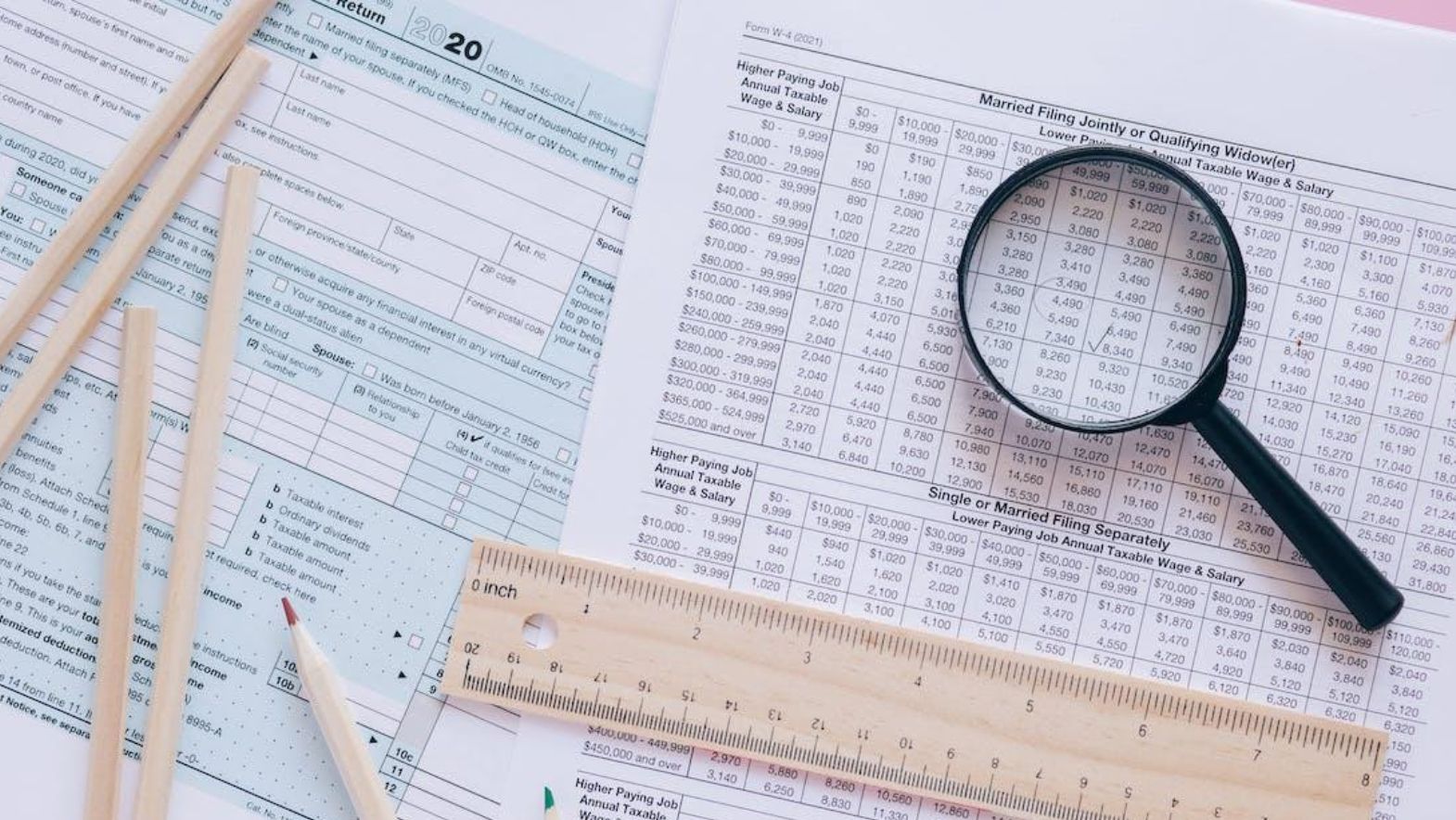No one likes doing their taxes, but few things are as financially frightening as a tax lien. If you’ve ever stared down that painful tax bill and wondered, “What’s the worst that could happen?” buckle up, friends – tax liens are about to take center stage.
In this post, we’ll lift the curtain on these mysterious money monsters called tax liens. With proven expertise and client success stories, we’ll guide you through understanding and resolving these complex issues. What are they exactly, how do they show up, and – most importantly – how can you avoid becoming one of their victims? By the end, you’ll understand these beasts inside and out so the taxman can’t catch you by surprise.
So, what’s a tax lien? Picture it like this – you owe back taxes to the local government somewhere. If you don’t pay up, they’ll put a giant “IOU” sign on your property like they’re staking a legal claim. That’s a tax lien, folks! It’s basically the tax collector’s way of saying, “This asset belongs to us until you settle your debts”.
Tax Lien At Glance

Liens affect everything from refinancing your home to getting approved for loans. Can you say yikes? The good news is that help is here. By understanding how the lien process works, you can nip potential problems in the bud.
The first step to tax bill is usually getting hit with a “Notice of Tax Due” from the taxman, whether that’s the IRS or your state. This is your gentle reminder to pay up. Blow it off, and watch out – a Notice of Federal (or state) Tax Lien comes next. This official legal document often gets filed like a public service announcement shouting “Hey creditors! Back off, the tax folks get paid first.”
From there, things can get ugly quickly if the unpaid taxes don’t get addressed. Wage garnishment and asset seizure are on the table at this point as methods to collect. No one wants the tax police confiscating their stuff!
The best medicine is prevention. Set calendar reminders for quarterly payments and file returns on time to head off liens at the pass. Always keep good records too in case the CRA comes knocking. Don’t be afraid to ask an expert for help either – hiring a tax pro can nip problems in the bud.
Guiding You on Tax Lien Basics
On the bright side, with some know-how tax liens don’t necessarily spell doom. There are national tax lien association and relief programs like Offers in Compromise that let hard-luck cases settle for less. Communicating with collections staff shows you’re willing to cooperate too.
So breathe easy – as long as you’re proactive about staying tax compliant, liens needn’t be scary. Just do your due diligence like paying on schedule. With a bit of planning, the taxman will avoid putting a lien on your finances. Keep those records tidy and it’ll be smooth sailing from here on out!
Many taxpayers find tax liens confusing and concerning. However, gaining clarity on how they work can help one better manage their tax obligations and finances. This in-depth explanation breaks down everything one needs to know about liens – from their purpose and issuance, to resolution approaches. By learning more about these “money monsters,” what was once mysterious can be made clear. Understanding liens is important for taxpayers seeking to navigate responsibilities and safeguard their financial security.
What is a Tax Lien?

At its core, a tax lien is a legal claim the government places on your property when you have an unpaid federal tax debt, state income tax debt or other governmental obligation like delinquent property taxes. It serves as a notice to creditors that the tax authority has priority rights over any of your assets listed on the tax lien until the tax debt is satisfied.
There are two main types of tax liens – federal tax liens filed by the Internal Revenue Service (IRS) and state or local tax liens filed by other tax agencies like a state department of revenue.
Federal tax liens apply to income taxes, payroll taxes, and other taxes owed to the IRS. State and local tax liens usually involve property taxes or state income taxes owed to city and county governments.
Both federal and state and local governments use tax liens as an important tool to protect their interests in collecting tax debts owed by securing a lien on a taxpayer’s assets before other creditors. This gives them dibs over other lenders or collectors if the taxpayer fails to pay and the property must be seized or liquidated.
Specifically, a federal tax lien gives the IRS the legal right to to take priority over other creditors and claim a taxpayer’s real or personal property like homes, land, vehicles, bank accounts or investments to satisfy the government’s interest in outstanding federal tax debts.
A state or local or national tax lien association operates similarly to national tax lien association by securing a government’s interest in enforcing delinquent taxes like property tax payments owed to a particular state, county or city.
The Tax Lien Process
The tax lien process follows specific steps by tax agencies to place liens and notify taxpayers of their delinquent tax obligations. With the IRS, this generally includes:
Notice and Demand for Unpaid Taxes:
If taxes are owed and not paid after formal assessment, the IRS will send the taxpayer a notice demanding payment within 10 business days.
Notice of Federal Tax Lien Filing:
If no payment is received after receiving notice of a tax debt, the IRS will file a Notice of Federal Tax Lien (NFTL) against the taxpayer in the county or state where they reside or own property.
Notice of Federal Tax Lien Issuance:
Within five business days of filing the NFTL, the IRS will provide written notice to the taxpayer that a lien has been placed.
Tax Lien Recording:
The NFTL is recorded in the county/state’s office of records like the the tax collector, lien recorder or secretary of state, giving public notice of the outstanding federal tax debt on specific property.
The state tax lien process follows similar notification protocols, starting with notices of tax assessment and demands for payment before a tax lien certificate gets publicly filed against the delinquent taxpayer’s identified assets. It’s crucial taxpayers understand each step to avoid surprises and resolve issues promptly.
Impacts of Tax Liens
Clearly, tax liens for private investors are no minor matter and addressing them promptly avoids a host of financial headaches. Getting professional tax help is key to resolving tax lien investing issues before lasting damage occurs. Tax liens can cause various financial challenges for taxpayers until resolved:
- Credit Report Damage: All tax liens are reported on your credit file for 7-10 years, lowering credit scores significantly.
- Difficulty Obtaining Loans: Credit pulls may reveal tax liens, making it harder to get approved for mortgages, auto loans, credit cards or other financing until liens are paid off.
- Challenges Selling Property: Selling real estate like homes with attached tax liens requires satisfying liens at closing and dealing with other complexities.
- Issues Refinancing Loans: Open tax liens pose problems for homeowners refinancing mortgages or other loans secured by tied-up assets.
- Seizure of Personal Property: If liens remain unpaid, the IRS and states can levy or seize non-exempt assets like vehicles, bank accounts, investment funds, etc. to satisfy debts.
- Tax Levy Risk: Failing to address liens puts taxpayers at risk of wage garnishment or tax levies where the IRS/state directly seizes a portion of paychecks or retirement funds until paid in full.
Tax Lien Investigation Process
While tax liens themselves denote a formal, legal claim made on assets for unpaid debts, the investigatory process leading up to liens merits understanding as well as public record. With the IRS specifically:
Collection Due Process Notice:
Taxpayers get formal notice of their collection appeal rights and can request a Collection Due Process hearing to review collection actions or levies/liens.
Audit (Exam) Process:
Unfiled or erroneous tax returns may trigger an IRS audit where agents closely review filings for accuracy and validity of deductions or credits claimed.
Information Document Requests (IDR):
Auditors commonly use IDRs requesting backup documentation to verify items being examined during an audit. Failing to provide information or plausible explanations can lead to penalties and proposed changes.
Audit Closing Notice:
If additional taxes or penalties are proposed, taxpayers get a formal report and can agree, negotiate or escalate the case to IRS appeals for independent review.
Approved Changes:
Taxes, interest and penalties applied through the audit or appeals process must be paid or an installment agreement arranged to avoid enforced collection measures like liens.
Proper documentation and substantiation are crucial throughout IRS examinations, correspondence audits or field audits to substantiate positions and minimize additional payments. Knowledgeable representation helps navigate the investigatory process constructively.

How Tax Liens Affect Property
Since tax liens secured priority claims against taxpayers’ assets, they hold specific implications for real property owners, private sector investors, commercial institutions, and personal and property owners:
Real Estate Property Issues:
- Home Equity: Liens reduce home equity available to homeowners compared to lien-free fair market value. Equity cannot be fully tapped until liens are cleared.
- Refinancing Barriers: Most lenders require liens be addressed before closing on better refinance terms due to lien priority rights over new mortgages.
- Short Sales Difficulties: Selling a home for less than what’s owed including liens generally requires tax authority approval for “short sale” closings.
- Foreclosure Risk: Persistent failure to address liens heightens risk of government-enforced property tax foreclosure if liens remain unpaid long enough.
Personal Property Complications:
- Vehicle Titles: Car loans often require settled liens as liens encumber clear ownership transfer of titles until removed.
- Seizure Exposure: IRS or state tax authorities may levy enough exempt and non-exempt personal assets like vehicles, bank accounts to fully or partially cover unpaid lien balances.
- Inheritance Blocks: Unaddressed liens make transferring ownership of titled assets like cars, RVs, boats to heirs difficult on death with liens still attached.
Clearly, fully understanding lien impacts on property—whether owned outright, financed or part of an other real estate whole—lets taxpayers take strategic steps to minimize disruption. Consulting tax experts for resolution advice specific to asset types involved is prudent.
READ MORE: Understanding the IRS Fresh Start Program

Resolving Tax Liens
Fortunately, taxpayers have options for dealing with tax liens based on the particular circumstances and type of federal tax lien certificates is at issue: federal or state/local. The IRS and state and federal tax lien administrators offer programs helping remove barriers and resolve federal tax lien debts responsibly:
Lien Withdrawal:
Tax authorities will withdraw NFTLs that were incorrectly filed, jeopardizing taxpayers’ jobs or finances. Taxpayers furnish proof, like receipts showing taxes were already paid.
Installment Agreements:
Taxpayers enter payment plans agreeing to routine monthly installments large enough that full debt is paid within 72 months or less, based on the ability to pay. Default risks further collection action.
Offer in Compromise:
Taxpayers seeking lien discharge may attempt to negotiate a significantly discounted settlement through an Offer in Compromise for “doubt as to collectibility” if full payment would cause financial hardship. Requires stringent documentation proving the inability to fully pay.
Innocent Spouse Relief:
Married joint filers owed additional tax from spouse’s income may apply, having believed the tax was accurate when filed, and the tax wouldn’t be paid. Relief shifts liability from blameless spouses if the criteria are met.
Currently Not Collectible:
Struggling taxpayers may request a halt if the projected future ability to pay is doubtful. Requires annual confirmation of no significant positive changes to sustain noncollectible status.
Lien Subordination:
The IRS or states may agree to place a lender’s mortgage above their liens to facilitate property sales/refinances through government subordination of lien priority right.
Lien Discharge/Release After Payment:
Once full taxes, the interest rate, and penalties due are paid, liens are officially released from the property owner, the records, and the credit reports. Formal requests expedite cancellation processing.
Remember, meeting payment agreements and fully paying liens are the surest ways to remove the threats they pose to property ownership without further derogatory credit consequences. Optimal resolution weighs specific taxpayer situations and capabilities. Experienced tax counsel ensures informed choices.
Options for Resolving Liens Through Property Forfeiture
In some cases, where the lien and the unpaid amount either far exceed the assessed value of the property or the taxpayer is unable to make payments, resolving the lien may involve forfeiting the encumbered property. This is generally considered a last resort after other options have been exhausted.
Certificate of Discharge
To discharge the tax lien certificates due through forfeiture, the taxpayer can provide the secured property to the government in a process called a “certificate of discharge of tax lien amount.” This involves signing over clear title to the property to the local government issues satisfy the outstanding tax lien certificates and amount. The property is then liquidated by the federal tax lien under authority, with proceeds going toward taxes owed.
Abandonment
If a taxpayer walks away from the secured property and ceases all ownership responsibilities and payments, they are essentially abandoning it. The tax agency can then seize and sell the abandoned property through forfeiture.
However, abandonment tax sale has credit and legal implications that should only be considered with tax professional guidance.
Short Sale Approval
As mentioned earlier, trying to sell an encumbered property for less than the tax lien sale amount requires tax authority approval. They may agree to the short sale price as full settlement in lieu of other forfeiture options like the foreclosure process that take more time and result in acquisition of a distressed asset.
While certainly disadvantageous to lose property, forfeiture can help resolve liens where other choices prove untenable.
Taxpayers should thoroughly evaluate all viable remedies with tax advisors before deciding forfeiture is the sole remaining path forward. Proper evaluation of individual situations leads to the best resolution in each case.
ALSO READ: Top Strategies for Effective Tax Relief: A Comprehensive Guide
Takeaways
For those seeking to resolve complex tax problems through established IRS relief programs, 800tax.com provides a full-service solution with verified credentials and legitimacy. They offer various solutions to help taxpayers effectively resolve tax problems. Their services include wage and bank levy releases, unpaid property taxes, lien removal assistance, offer in compromise negotiations with the IRS, installment agreement setup, and more.
Speaking with a tax resolution expert can provide clarity on the best options specific to one’s tax situation. Their expertise navigating the ins and outs of the tax system can save clients significant time and stress.
To learn more about eligibility and get a free assessment of one’s unique situation, I recommend visiting their website at 800tax.com. Speaking with a representative is the first step to empowering taxpayers and regaining financial stability and control.
How does 800tax perform an analysis of one’s tax situation?
The first step is to request a free, confidential tax liability assessment on the 800tax website. Taxpayers simply need to provide some basic information and an expert will analyze the case to understand outstanding obligations, prior filings, and craft a customized resolution plan. They then work directly with the IRS to implement the recommended strategy.
What is the process for working with 800tax?
800tax uses a 3-stage process: first an expert consultation, then thorough discovery and research of the tax debt situation, followed by presenting a personalized resolution and payment plan directly to the IRS. Their team of certified professionals aims to negotiate effective outcomes that alleviate tax debt burdens for clients. Customer reviews show many taxpayers achieved lasting resolution and peace of mind through 800tax’s services.

